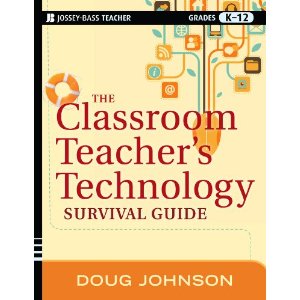Guidelines for Educators Using Social and Educational Networking Sites
Guidelines for Educators Using Social and Educational Networking Sites (with Jen Hegna) Library Media Connection, March/April 2010
Social networks are rapidly growing in popularity and use by all ages in society. The most popular social networks are web-based, commercial, and not purposely designed for educational use. They include sites like Facebook, MySpace, Bebo, and Xanga. For individuals, social networking sites provide tremendous opportunities for staying in touch with friends and family.
Educational networking sites are also growing in use. These sites are used by educators for both professional development and as a teaching tool, and are usually restricted to selected users and not available to the general public. These include networking tools such as Moodle, educational wikis, specially created Nings, or district adoptions of online applications such as Saywire, Live@edu or Google Apps for Education.
As educators, we have a professional image to uphold and how we conduct ourselves online impacts this image. As reported by the media, there have been instances of educators demonstrating professional misconduct while engaging in inappropriate dialogue about their schools and/or students or posting pictures and videos of themselves engaged in inappropriate activity online. Mistakenly, some educators feel that being online shields them from having their personal lives examined. But educators’ online identities are very public and can cause serious repercussions if their behavior is careless.
One of the hallmarks of online networks, both social and educational, is the ability to “friend” others – creating a group of others that share interests and personal news. The district strongly discourages teachers from accepting invitations to friend students within personal social networking sites. When students gain access into a teacher’s network of friends and acquaintances and are able to view personal photos and communications, the student-teacher dynamic is altered. By friending students, teachers provide more information than one should share in an educational setting. It is important to maintain a professional relationship with students to avoid relationships that could cause bias in the classroom.
The district does recognize the value of student/teacher interaction on educational networking sites. Collaboration, resource sharing, and student/teacher and student/student dialog can all be facilitated by the judicious use of educational networking tools. Such interactivity is a critical component of any online class and can greatly enhance face-to-face classes. Yet since this is a new means of communication, some guidelines are in order for educational networking as well.
For the protection of your professional reputation, the district recommends the following practices:
Guidelines for the use of social networking sites by professional staff:
- Do not accept students as friends on personal social networking sites. Decline any student-initiated friend requests.
- Do not initiate friendships with students
- Remember that people classified as “friends” have the ability to download and share your information with others.
- Post only what you want the world to see. Imagine your students, their parents, your administrator, visiting your site. It is not like posting something to your web site or blog and then realizing that a story or photo should be taken down. On a social networking site, basically once you post something it may be available, even after it is removed from the site.
- Do not discuss students or coworkers or publicly criticize school policies or personnel.
- Visit your profile’s security and privacy settings. At a minimum, educators should have all privacy settings set to “only friends”. “Friends of friends” and “Networks and Friends” open your content to a large group of unknown people. Your privacy and that of your family may be a risk.
Guidelines for the use of educational networking sites by professional staff:
- Let your administrator, fellow teachers and parents know about your educational network.
- When available, use school-supported networking tools.
- Do not say or do any thing that you would not say or do in as a teacher in the classroom. (Remember that all online communications are stored and can be monitored.)
- Have a clear statement of purpose and outcomes for the use of the networking tool.
- Establish a code of conduct for all network participants.
- Do not post images that include students without parental release forms on file.
- Pay close attention to the site’s security settings and allow only approved participants access to the site.
Guidelines for all networking sites by professional staff:
- Do not use commentary deemed to be defamatory, obscene, proprietary, or libelous. Exercise caution with regards to exaggeration, colorful language, guesswork, obscenity, copyrighted materials, legal conclusions, and derogatory remarks or characterizations.
- Weigh whether a particular posting puts your effectiveness as a teacher at risk.
- Due to security risks, be cautious when installing the external applications that work with the social networking site. Examples of these sites are calendar programs and games.
- Run updated malware protection to avoid infections of spyware and adware that social networking sites might place on your computer.
- Be careful not to fall for phishing scams that arrive via email or on your wall, providing a link for you to click, leading to a fake login page.
- If a staff member learns of information, on the social networking site, that falls under the mandatory reporting guidelines, they must report it as required by law.
Please stay informed and cautious in the use of all new networking technologies.
Resources
- Should Students and Teachers be Online Friends?, Cheri Lucas http://www.education.com/magazine/article/Students_Teachers_Social_Networking/
- A Teachers Guide to Using Facebook, Bernadette Rego http://www.scribd.com/doc/16957158/Teachers-Guide-to-Using-Facebook-Read-Fullscreen
- Social Networking Best Practices for Educators, http://www.willard.k12.mo.us/co/tech/Document/SocialNetworkBestPractices.pdf
- Connections for Learning: a White Paper. Saywire, 2009
Written by Jen Hegna, Information Systems Manager, Byron (MN) Public Schools and Doug Johnson, Director of Media and Technology, Mankato (MN) Public Schools




